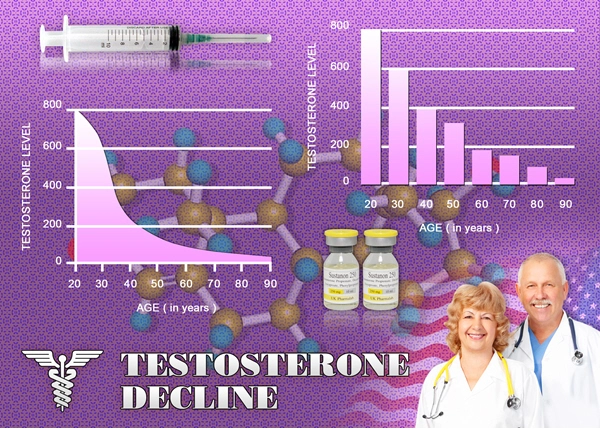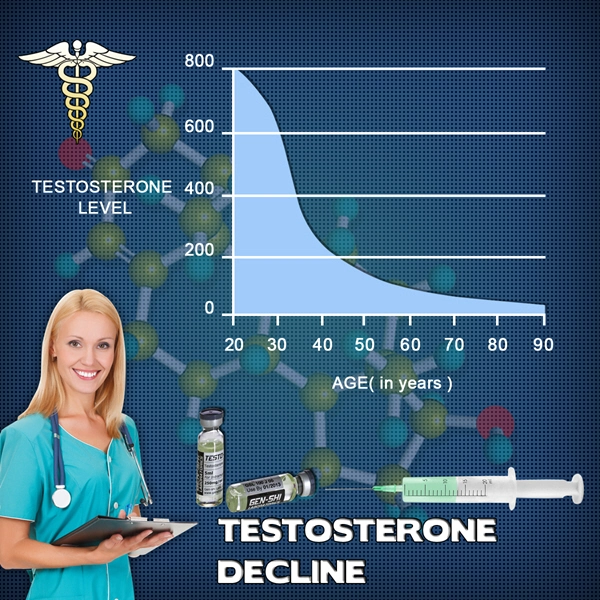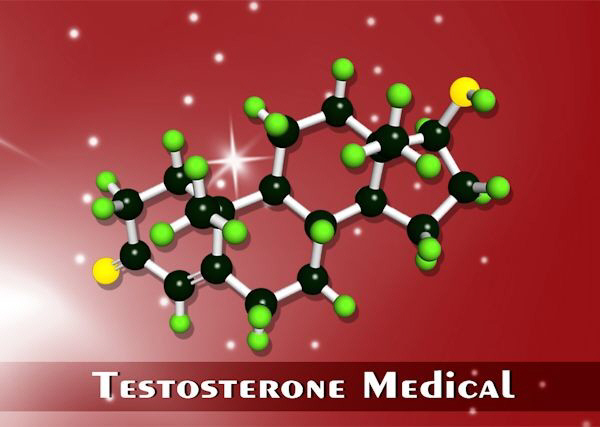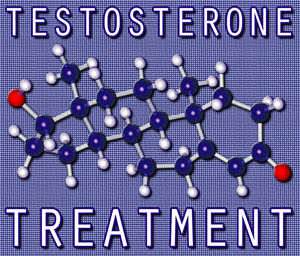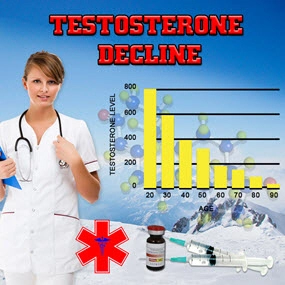Video Link: https://vimeo.com/293247308
Video Download: Click Here To Download Video
Video Stream: Click Here To Stream Video
Video Link: https://vimeo.com/293247527
Video Download: Click Here To Download Video
Video Stream: Click Here To Stream Video
Tamoxifen Citrate
What is Tamoxifen?
Tamoxifen is an orally administered medication, which is one of the most essential medicines used in the treatment of breast cancer around the world. 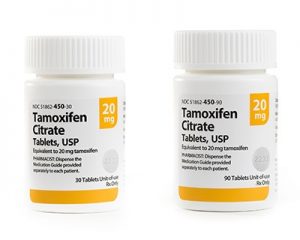 Because of its importance, and the prevalence of breast cancer around the globe, Tamoxifen is included in the WHO's List of Essential Medicines, those which are considered absolutely necessary to provide basic care to patients.
Because of its importance, and the prevalence of breast cancer around the globe, Tamoxifen is included in the WHO's List of Essential Medicines, those which are considered absolutely necessary to provide basic care to patients.
How Does Tamoxifen Work?
Tamoxifen is a medication that limits the activity of Estrogen in the breast tissue. When Tamoxifen is taken, it is broken down into a compound known as 4-hydroxytamoxifen, which then travels through the body producing effects dependent upon where it is.
Tamoxifen is considered most valuable because of its effect on breast tissue, but it also impacts processes in other areas of the body, such as the endometrium. In this area of the body, Tamoxifen actually encourages Estrogenic activity, whereas, in the breast tissue, it significantly reduces the effects of Estrogen upon breast tissue.
Because Tamoxifen impacts Estrogen activity differently dependent upon the area of the body, it is referred to as a Selective Estrogen-Receptor Molecule. It is highly effective at treating breast cancer, and the primary form of Hormone Therapy for female patients with Estrogen Receptor-Positive breast cancer that have not yet reached menopause.
What Is Estrogen-Receptor Positive Breast Cancer?
Breast cancer treatment depends upon the type of tissue that is malfunctioning. Estrogen-Receptor Positive, about breast cancer, means that the cancerous tissue in the breast has receptor sites that likely can respond to Estrogen, which will essentially feed the cancer and promote its growth.
Estrogen-Receptor Negative Breast cancer, on the other hand, does not have these receptor sites and is not directly affected by the presence of Estrogen. Many breast cancers also respond to progesterone, and these cancers are known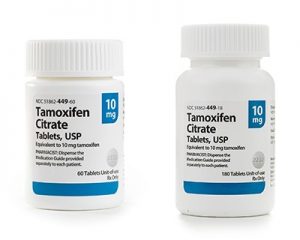 as Progesterone-Receptor Positive. Two-thirds of breast cancer patients have cancer cells that respond to either or both Estrogen and Progesterone.
as Progesterone-Receptor Positive. Two-thirds of breast cancer patients have cancer cells that respond to either or both Estrogen and Progesterone.
Tamoxifen is also commonly used in the treatment regimen for post-menopausal breast cancer patients, but drugs like Anastrozole are frequently used as an alternative in this case.
What is Anastrozole?
Anastrozole is an alternative form of treatment that suppresses the body's production of Estrogen from the point of the hypothalamus. To put it briefly, An anastrozole sends a signal to the human brain, which causes it to decrease its signaling for the production of Estrogen at a systemic level.
Because Estrogen activity is much less critical for hormone balance after menopause, Anastrozole is frequently used to limit Estrogen production altogether, whereas, in premenopausal women, it is preferable to maintain regular Estrogen activity in other parts of the body.
How Does Tamoxifen Slow Breast Cancer Growth?
Many forms of breast cancer develop because cells malfunction, which usually feeds off of Estrogen to promote the health of breast tissue. In the case of Estrogen-Receptor Positive breast cancer, the cancerous tissue has to have Estrogen to reproduce. Tamoxifen works by blocking Estrogenic activity in breast tissue. Tamoxifen is an Estrogen antagonist in breast tissue, which means that the two hormones compete for the same activation sites in the breast tissue.
When Estrogen links to these cells, it promotes the growth of breast tissue. Still, when a patient takes Tamoxifen, it is broken down into a metabolite which interacts with these Estrogen receptors but does not trigger breast tissue growth.
Tamoxifen starves breast cancer cells of Estrogen, slowing their growth and allowing other aspects of treatment to be more productive, thereby reducing the mortality rate associated with breast cancer.
Tamoxifen was first synthesized by the company now known as AstraZeneca (Imperial Chemical Industries). As a treatment, Tamoxifen has been sold under a variety of different names, including Genox, Valodex, Istubal, and Nolvadex.
Further Information About Tamoxifen and Breast Cancer
Although Tamoxifen is most commonly used for the treatment of active breast cancer in premenopausal and postmenopausal women, it is also used in other applications related to breast cancer. For example, Tamoxifen is a highly effective component of male breast cancer treatment. Men don't produce as much Estrogen as their female counterparts, but still, deliver the hormone from the Adrenal Glands and adipose fat tissue. In men, Tamoxifen works via the same mechanism as it does in women.
Tamoxifen is often prescribed as a preventative measure in women patients that are considered to be at high risk of breast cancer. By limiting the activity of Estrogen preventatively, it increases the likelihood that cancerous cells starve off before they go out of control.
Breast cancer most commonly occurs in a single breast at a time, but women that experience breast cancer in one breast are at increased risk of experiencing breast cancer in the other breast in their lifetimes. Tamoxifen is sometimes used as a preventative treatment to reduce the risk of breast cancer in the future. Many women in the past often received double mastectomies, one to eliminate the existing cancer and one to prevent future cancer, but with treatments like Tamoxifen, the risk of developing breast cancer in the second breast (known as contralateral breast cancer), is as low as 1%, with low mortality risk as long as it is caught early.
Tamoxifen Vs. Raloxifene
Tamoxifen and Raloxifene are similar medications that can both effectively be used in the treatment of breast cancer, and they are both effective as preventative measures in breast cancer treatment. Both medicines function in the same way in breast tissue: by blocking Estrogen activity. Raloxifene was first produced as hormone therapy for women at risk of suffering from the effects of Osteoporosis.
Both medications are Selective Estrogen Receptor Modulators, which limit breast tissue activity. Both drugs also encourage Estrogenic activity in other 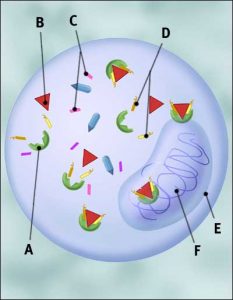 parts of the body, however. Raloxifene encourages Estrogenic activity primarily in the endometrium, whereas Raloxifene encourages Estrogenic activity mainly in the bone tissue.
parts of the body, however. Raloxifene encourages Estrogenic activity primarily in the endometrium, whereas Raloxifene encourages Estrogenic activity mainly in the bone tissue.
Current research shows that both treatments are equally effective as preventative measures to prevent the development of breast cancer in high-risk patients. In fact, for this purpose, Raloxifene actually appears to have a better safety profile for such use. However, women who are pregnant, may become pregnant, or are lactating should not use Raloxifene.
Other Medical Uses of Tamoxifen, including Off-Label Use of Tamoxifen
Tamoxifen Treatment for McCune-Albright Syndrome
McCune-Albright Syndrome is a genetic condition which impacts the bone growth and pigmentation in both boys and girls and is most notable because it encourages early puberty. Tamoxifen can be used to prevent the bones from maturing too quickly, which causes the pediatric patient not to grow as tall as expected.
There are some potential issues and complications, however. Research published in 2008 showed that Tamoxifen might produce unwanted side-effects, such as reduced HGH production and changes in bone maturation, which may lead to this form of treatment to be limited in the future.
Tamoxifen Treatment for Fertility
Tamoxifen has been effectively utilized to promote fertility in women suffering from conditions that limit their ability to ovulate. Because of its positive impact on endometrial function, Tamoxifen helps stimulate a regular menstrual cycle when taken from days three to seven of the cycle.
Tamoxifen Therapy can also promote fertility in women that have experienced breast cancer in the past. Tamoxifen is also considered a viable alternative to Clomiphene Citrate and is often used in patients that don't respond to Clomiphene Citrate Fertility Treatment.
Tamoxifen Gynecomastia Treatment
Because Tamoxifen is highly effective at limiting the development of breast tissue, it is often used as an alternative to aromatase inhibitors such as Clomiphene Citrate in male patients experiencing gynecomastia. It is also sometimes used by individuals that abuse steroids for the same reason. Often, Tamoxifen is used before symptoms appear but is also commonly prescribed and/or utilized when initial signs of gynecomastia appear, including nipple sensitivity and soreness.
Tamoxifen is used before symptoms appear but is also commonly prescribed and/or utilized when initial signs of gynecomastia appear, including nipple sensitivity and soreness.
Tamoxifen and Bipolar Disorder
Tamoxifen has been used to some success as a means of alleviating the severity of manic episodes among patients suffering from bipolar disorder. In addition to its effects upon Estrogen activity, Tamoxifen also mitigates the activity of protein kinase C (PKC) in the brain. There is evidence that manic activity from bipolar disorder is at least partially caused by abnormally high levels of PKC activity in the brain.
Tamoxifen, Angiogenesis, and the Navy Protocol
When a person develops cancer, cancer cells send out signals which promote the development of blood vessels, which feed nutrients to the cancer cells, encouraging their growth. A therapeutic cocktail of Tamoxifen, Doxycycline, and Celecoxib was used in a canine cancer patient named Navy, hence the name.
Further research has shown that Tamoxifen treatment provided alone can limit the angiogenic activity associated with cancer in animal research. In the future, Tamoxifen may be utilized as a means to treat cancer in human patients. The Navy Protocol is still used in veterinary medicine today.
Tamoxifen and Riedel's Thyroiditis
Riedel's Thyroiditis is an inflammatory condition that affects the connective tissue of the thyroid capsule. Over time, this condition afflicts the muscles of the neck and results in the compression of the trachea. Tamoxifen therapy is often used in combination with surgery to treat the symptoms.
Side Effects of Tamoxifen
Tamoxifen is highly effective as a component of breast cancer treatment, but it does not come without its drawbacks. The three medications Tibolone, Raloxifene, and Tamoxifen, are all medications that treat breast cancer by the same mechanism (suppressing Estrogenic activity in breast tissue, and all three have a similar list of potential side-effects. There are also many secondary effects of Tamoxifen and its relatives that are beneficial to most patients.
Tamoxifen and Bone Tissue
One positive side effect of Tamoxifen is that it improves bone mineral density in aging patients. This is because, although Tamoxifen inhibits Estrogenic activity in the breasts, it actually encourages such activity in the bone tissue.
This is because Tamoxifen reduces the activity of cells known as osteoclasts, which draw the calcium out of the bones in preparation for bone remodeling. With aging, however, catabolic activity starts to outpace anabolic activity in the bone, which leads to a loss of bone mineral density.
Tamoxifen was actually the first Selective Estrogen Receptor Molecule ever to be discovered because, before it was tested, it was believed that it would actually encourage osteoporosis. Researchers hypothesized that Tamoxifen would inhibit Estrogenic activity in the bone tissue, but found the opposite to be the case.
On the other hand, in the case of women that take Tamoxifen as a part of breast cancer recovery, are premenopausal, and continue to menstruate, the medication can inhibit bone mineral density. This is one reason why Tamoxifen is used most often in postmenopausal women, but many women still benefit from the treatment despite this.
Tamoxifen and Endometrial cancer
As we mentioned earlier, Tamoxifen not only inhibits the growth of breast cells, it encourages the development of endometrial cells. Some research suggests that, over time, Tamoxifen increases the risk of endometrial cancer and other changes in the endometrium.
It is believed that the risk of endometrial cancer increases by two to four times with long term use, and for this reason, Tamoxifen is prescribed for a maximum of five years under most circumstances.
For this reason, the American Cancer Society recommends that cancer specialists and other physicians only prescribe Tamoxifen if the risk of breast cancer coming back is greater than the risk of the patient experiencing endometrial cancer or other uterine cancers resulting from the treatment.
Metabolic and Cardiovascular Side-Effects of Tamoxifen
In the short term, postmenopausal patients experience healthier lipid levels as a result of therapy. Despite this short-term benefit, no evidence has  shown that Tamoxifen has a net positive effect on the heart resulting from these changes. Some patients that take Tamoxifen experience elevated triglyceride levels, so lipid levels should be monitored during treatment.
shown that Tamoxifen has a net positive effect on the heart resulting from these changes. Some patients that take Tamoxifen experience elevated triglyceride levels, so lipid levels should be monitored during treatment.
Tamoxifen also carries the risk of deep vein thrombosis and blood clots, which can lead to adverse health effects related to these conditions. Clotting risks are at their highest in patients that or under extended bed rest or have recently experienced a significant surgery. It also increases the risk of clots during surgery. Extended use of Tamoxifen can also contribute to fatty liver disease as a result of its impact on liver metabolism.
Tamoxifen and the Central Nervous System
Patients that take Tamoxifen for Breast Cancer sometimes show issues with cognitive inhibition and memory during treatment. Although Tamoxifen does carry this risk, the risk is less than other methods to inhibit Estrogen activity in breast tissue, such as Anastrozole.
Tamoxifen and Sex Drive
Some patients that take Tamoxifen for breast cancer report that Tamoxifen can inhibit sex drive.
Tamoxifen and Puberty
Tamoxifen has been most thoroughly researched regarding its effects upon breast tissue, but its impact upon other systems of the body are not fully known. In animal studies, Tamoxifen does impact bone metabolism during puberty, and it is hypothesized that Tamoxifen treatment before the patient reaches Final Adult Height may cause patients not to reach their full potential height.
Tamoxifen Drug Interactions and Pharmacological Exceptions to the Normal Effects of Treatment
Tamoxifen and CYP2D6
Some patients that have an abnormal CYP2D6 gene do not always respond readily to Tamoxifen treatment. This is because CYP2D6 plays an integral role in the mechanism by which Tamoxifen is broken down into its active component, and if this gene is not functioning normally, it slows down the rate at which Tamoxifen is metabolized by the body.
For this reason, women that have a dysfunctional CYP2D6 gene don't get the same results as other women. Genetic evaluation can help medical professionals choose the appropriate medication for the patient.
Tamoxifen and SSRIs
There is research that presents evidence that antidepressant medications such as Zoloft, Prozac, and Paxil can inhibit the standard beneficial capacity of Tamoxifen for breast cancer. This is because the enzyme which breaks down Tamoxifen (the same enzyme that is produced from the CYP2D6 gene), also breaks down these antidepressants.
Research published in 2009 showed that among female breast cancer patients that took Tamoxifen, 7.5% had the cancer come back. On the other hand, those that took the antidepressants listed above-experienced recurrence 16% of the time.
Not all antidepressants produce this effect, however. Luvox, Lexapro, and Celexa do not affect the metabolism of Tamoxifen because these antidepressants are not processed by the same enzyme. Among Zoloft, Prozac, and Paxil, Paxil impacts Tamoxifen metabolism most severely.
These treatments also reduce the effectiveness of Tamoxifen taken as a breast cancer treatment and significantly increase mortality risk if taken together for an extended period during treatment.
What Percentage of Patients Respond Abnormally to Tamoxifen?
The body of scientific evidence suggests that 7-10% of female breast cancer patients have genetic profiles that inhibit the effectiveness of Tamoxifen.
Genetic testing can uncover the underlying genetic profile of the patient to ascertain what form of therapy will meet the needs of the patient most completely.
ascertain what form of therapy will meet the needs of the patient most completely.
The most important aspect of the genetic profile is the status of the CYP2D6 gene, which is responsible for the metabolism of 20% of all medications.
References
Anastrozole Wiki:
http://en.wikipedia.org/wiki/Anastrozole
Contralateral Breast Cancer Risk Is Highly Overestimated:
Epidemiology of Contralateral Breast Cancer:
http://cebp.aacrjournals.org/content/8/10/855.full
Hormone Receptor Status:
http://www.breastcancer.org/symptoms/diagnosis/hormone_status
McCune-Albright Syndrome:
http://www.ncbi.nlm.nih.gov/pubmedhealth/PMH0002197/#adam_001217.disease.causes
Raloxifene Wiki:
http://en.wikipedia.org/wiki/Raloxifene
Tamoxifen Boosts Fertility:
http://www.webmd.com/breast-cancer/news/20030107/tamoxifen-boosts-fertility
Tamoxifen Wiki:
http://en.wikipedia.org/wiki/Tamoxifen
WHO Model List of Essential Medicines Wiki:
http://en.wikipedia.org/wiki/World_Health_Organization%27s_List_of_Essential_Medicines
Contact Us Today For A Free Consultation

- Tamoxifen Citrate Guide [Last Updated On: January 12th, 2024] [Originally Added On: February 20th, 2020]
- Tadalafil (Cialis) Guide [Last Updated On: July 21st, 2024] [Originally Added On: May 12th, 2020]
- Vardenafil (Levitra) Guide [Last Updated On: June 23rd, 2024] [Originally Added On: May 17th, 2020]
- Testosterone Cypionate Guide for Treatment of Low T Symptoms [Last Updated On: February 3rd, 2024] [Originally Added On: August 11th, 2020]
- Escitalopram (Lexapro / Cipralex) Guide [Last Updated On: July 22nd, 2024] [Originally Added On: April 8th, 2021]
- Escitalopram (Lexapro / Cipralex) Guide [Last Updated On: November 24th, 2024] [Originally Added On: April 11th, 2021]
- Male Birth Control Gel on the Road to FDA Approval [Last Updated On: July 30th, 2024] [Originally Added On: January 24th, 2022]
- What are Adaptogens and How Can They Help Me? [Last Updated On: October 7th, 2024] [Originally Added On: January 10th, 2023]
Word Count: 2626

